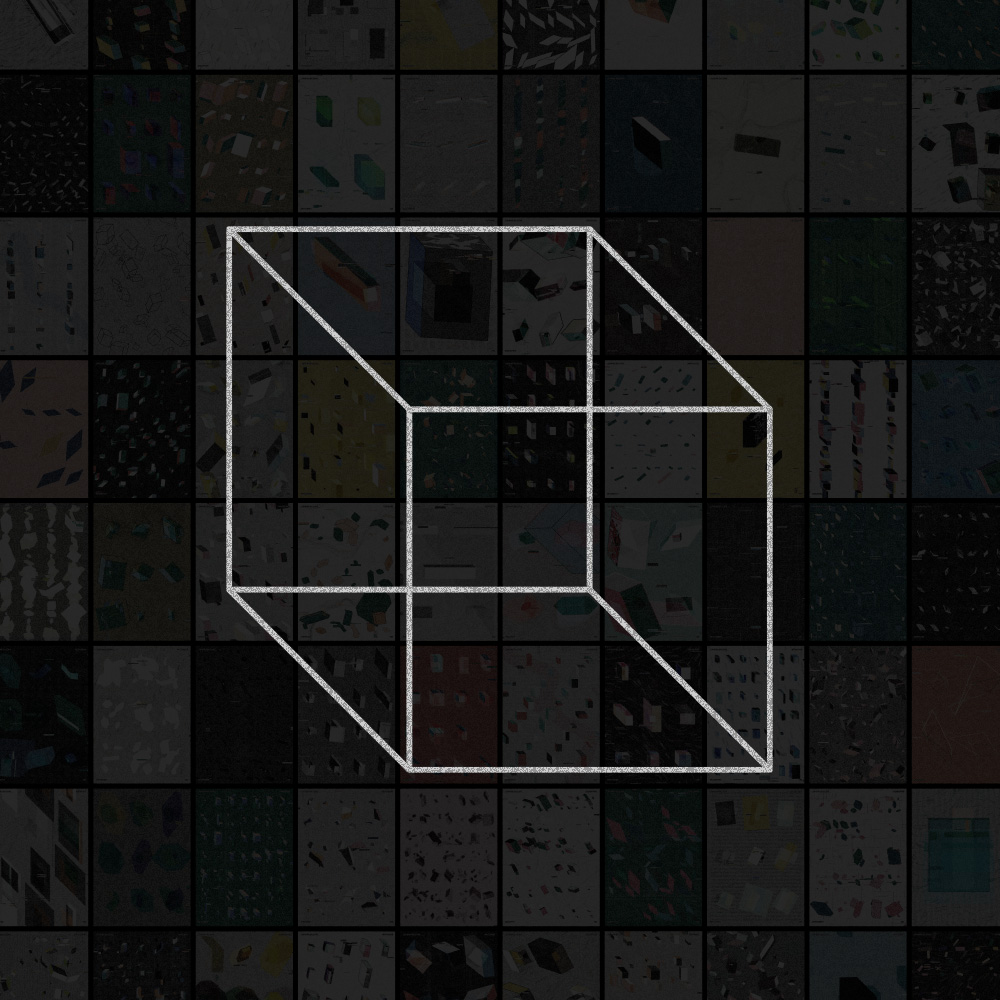Visualising Time
In his digital artwork Polylith, artist OTO challenges our perception of time, visualizing it not as a forward-moving current but as a flow from future to past—from Bitcoin’s final block to its Genesis.
“In our daily lives, we perceive time as flowing from past to future,” OTO explains. “However, in the context of information, I've long held the notion that this flow reverses.” To him, information initially exists in a state of potential, only becoming definite upon observation. “This intriguing sensation resonates with our perception of the real world,” he adds.
This philosophy isn't just conceptual—it’s structural. “In Bitcoin's blockchain, past blocks remain unaltered, existing as fixed records. However, their visualization, interpretation, and ascribed meanings depend on the observer, rendering the structure dynamic and multilayered,” OTO says. Polylith, then, becomes a poetic truth: “Despite the past being fixed, future events and observations can alter its meaning.”
This isn't just about technology—it’s about the act of creation itself. “An artwork not understood today may be rediscovered in the future, with its meaning and value redefined.”
Coexisting Structures
Despite being a single continuous piece, Polylith evolves with every new block added to the Bitcoin blockchain. How does OTO reconcile the paradox of stillness and movement?
“‘Stillness’ and ‘movement’ may seem opposing, but I perceive them as coexisting structures,” he shares. For OTO, this duality is at the heart of his fascination: the tension and fusion between chaos and cosmos. “This work embodies change within constancy and a steadfast axis amidst continuous transformation.”
He sees parallels in digital art’s evolution too. “There’s a growing recognition of artworks as ongoing processes rather than singular completed entities. Even a snapshot captures the ‘flow of creation up to that moment.’”
Perception as Participation
In Polylith, observation is far from passive. Interacting with the work—clicking, scrolling, or altering values—reshapes what is seen. OTO sees this as a metaphor for reality itself.
“I believe reality doesn't possess a predetermined structure; rather, its form changes based on our perceptions and feelings,” he explains. “This closely aligns with our daily experiences of ‘the fluidity of reality’ and how ‘perspectives alter meanings.’”
The lattice structure at the heart of the piece begins with a single cube and recursively expands. Though the form remains the same, its appearance shifts depending on the viewer’s interaction. “The same object can evoke vastly different impressions depending on the angle, timing, and manner of engagement.”
The Lith
At the center of Polylith is the cube, or “Lith,” symbolizing both individual Bitcoin blocks and the accumulation of time.
“The central ‘Lith’ primarily symbolizes the Bitcoin block itself,” says OTO. But its simplicity is intentional. “I aimed to express complex, significant themes using a single, extremely simple object.”
Just as Bitcoin’s minimalist protocol generates profound implications, these cubes shift meaning as they accumulate. “They combine to form patterns, altering the overall structure and impression. This mirrors how individual blocks in a blockchain only gain history and meaning when linked together.”
Design Influences
OTO draws inspiration from 20th-century design legends like Josef Albers and the Bauhaus movement. Their influence is clear in Polylith’s visual language.
“Colors and shapes don't exist in isolation; their appearance changes based on context and relationships,” he notes, echoing Albers’ belief that “the same thing can appear infinitely different.”
As for the Bauhaus, OTO is captivated by its timeless resonance. “It was a revolutionary, future-oriented movement… yet from today’s viewpoint, it evokes a ‘retro-futuristic’ sensation. The coexistence of seemingly contradictory time flows and the reconstruction of meaning is profoundly beautiful to me.”
In Real Time
One of Polylith’s most remarkable traits is how it responds to real-time Bitcoin blockchain data, using it to generate visual changes.
“For example, the code calculates the average transaction size to influence the intensity and density of the glitch effects,” OTO explains. These distortions are rendered with noise patterns derived from the block’s hash string. “As the data volume increases, the glitches become more complex and chaotic.”
But Polylith maintains balance. “If the block data were applied directly to the overall animation, the visual continuity could easily break,” he says. “By using it in localized glitch effects, I’ve found a natural way to incorporate those variations.”
Inscriptions, too, leave their mark. “When an inscription is transacted, the background pattern and texture change… giving the impression that the artwork has ‘passed through another layer.’”
Even inscription size affects the piece. “Larger inscriptions behave like massive celestial bodies, causing the pace of change to slow down—just like a large star with strong gravity.”
Technical Alchemy
Bringing Polylith to life required overcoming significant technical challenges, especially in dynamically fetching and visualizing blockchain data.
“Users can scroll through past blocks using the mouse wheel, but to make this possible, the system must fetch block data in real time,” OTO explains. To handle performance demands, he built a system that fetches data in batches of 100 blocks and caches them locally. “Absorbing the asynchronous nature between user interaction and data retrieval was one of the key technical challenges.”
He’s optimistic, though: “As technology progresses—especially with improved hardware and connection speeds—it will become possible to achieve even more direct and fluid structural transformations.”
The Generation of Meaning
Interaction lies at the heart of Polylith, from revealing metadata to manipulating time and space.
“Since the work evolves in sync with the ever-changing blockchain, it is inherently connected to the ‘now,’” says OTO. New blocks update the piece every minute, making every moment unique. “Depending on the context of the moment and their own internal state, viewers will perceive something entirely different each time.”
That, to OTO, is the core of the experience. “More than anything, I want viewers to experience how the act of ‘looking’ isn’t just passive reception—it is the very act of generating meaning.”
Capturing the Unfixed
Unusually for a real-time generative piece, Polylith includes a high-resolution print function. Why?
“This printing feature isn’t just about turning a digital work into something that can be physically displayed—it’s about capturing and recording a moment within a constantly changing structure,” OTO shares.
By isolating a single configuration, the print function reflects the core philosophy of the piece. “It offers a way to physically experience the concept that observation determines structure, and that meaning stabilizes through the act of witnessing.”
And for OTO, the shift from fluid digital display to tactile print isn’t just technical—it’s emotional. “The same structure, when animated and when frozen, can feel entirely different. That difference directly affects how we feel and perceive.”
A Living, Breathing Artwork
Because Polylith is tied to the Bitcoin blockchain, it will never be finished. And that’s exactly the point.
“It constantly reminds me that a work of art is not a ‘finished’ product, but something that exists in a continual state of becoming,” OTO reflects.
This has shifted how he sees authorship. “From making something final, to building an open structure that invites change.”
Collectors, too, play an active role. “When a work is observed and interpreted, new layers emerge. That kind of relationship between the artwork and its observers is something I see as essential.”
Technically, the piece is built to evolve. “Polylith uses a SAT endpoint, which allows for future upgrades and extended expressions.”
Ultimately, though, OTO’s hope is simple: “I hope people are first drawn to the work through a purely aesthetic experience—just by feeling that it’s beautiful. Then, through that initial connection, they may begin to explore the deeper structures and ideas within.”
“And eventually,” he adds, “come full circle—returning to a place of feeling, where they once again simply find it beautiful. If Polylith can offer a cycle like that—between perception and reflection—I would consider that a success.”




.png)